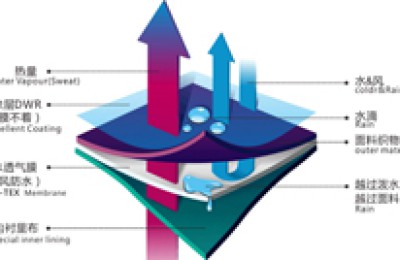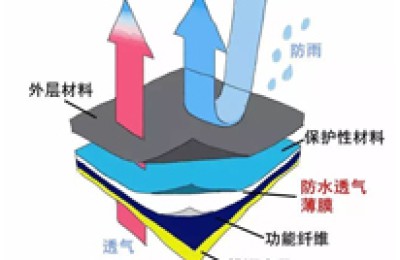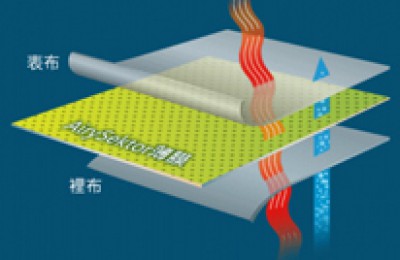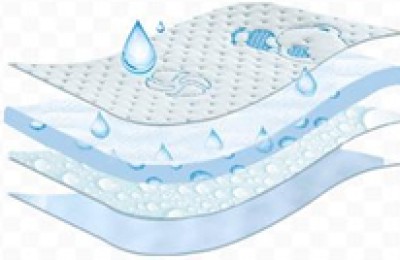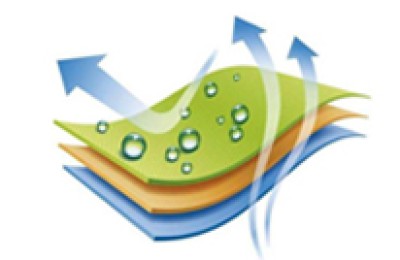When the market is good, there will be rare situations like “a piece of cloth is hard to find” and “you can’t buy cloth even if you have money”. In bad times, some incredible phenomena will also occur. Recently, a friend, Xiao Wang, who runs a weaving factory, told the editor something strange: the goods he sold out a month ago due to financial constraints are now “making money”.
Can you still “make money” by selling goods?
Due to the poor market environment this year, excess upstream production capacity and sluggish downstream demand, the market announced Profits are suppressed very low, and sometimes some markets have too many products in stock and can only ship at breakeven or even at a loss.
The same is true for Xiao Wang’s factory. Because the cloth is unsaleable, a large amount of pongee is piled up in the warehouse. However, taking into account factors such as workers’ wages, water and electricity rent, and bank loans, the machines must be kept running. stand up. The machines are always running and raw materials are used, but the cloth produced cannot be sold and can only be turned into inventory.
At the beginning of October, because he had just paid wages to the workers, Xiao Wang’s funds were temporarily unable to be turned over. There was not enough money in his account to buy raw materials, so he paid 0.3 below the market price. The price of 200,000 meters of 300T pongee in stock was sold at a price of RMB/meter. The profits of Chun Yafang this year are already thin. If it drops by 0.3 yuan, it means that the goods are sold at a loss, and the market will quickly eat up this batch of goods.
As a result, more than a month later, the price of raw polyester filament continued to fall, driving the price of cloth to continue to fall. , the decline even exceeded 0.3 yuan/meter. Xiao Wang looked back and calculated that if the cloth produced at that time was not sold, it would basically become inventory. The situation has not improved yet. But when I thought about it, the 200,000 meters of inventory that was thrown away at that time was equivalent to making such a large order at a normal price. In a sense, I actually made a profit.
Throwing goods around made “money”. This result made Xiao Wang a little bit dumbfounded.
Polyester raw materials cannot “survive the disaster”
However, this situation does not only occur in the weaving market, but also in the polyester market this year. Due to the poor sales of terminal clothing, a large number of weaving companies went on holidays and suspended production in July and August, resulting in a sharp decline in the operating rate of looms and a sharp increase in polyester yarn inventories in polyester factories.
In order to reduce inventory, polyester factories are racking their brains, and raw material price reduction promotions are a common method in It has been used frequently this year and can often drive a wave of production and sales. However, weaving companies that bought yarn after the promotion found that the price of polyester filament was still falling after the promotion. In this way, there seems to be no difference in the price of polyester filament before and after the promotion. For weaving companies, it is nothing more than raw materials sooner or later. It makes a difference to buy it later.
The more it falls, the less you buy. The more you don’t buy, the more it falls, falling into a vicious cycle.
This year’s market situation is like this. The rare phenomenon of selling goods in the past has become a “routine operation” in the weaving market, and the same is true for polyester raw materials. , there will be discounts and price cuts every once in a while.
Under the influence of the “buy up, not buy down” mentality, the current weaving market has a strong wait-and-see attitude.
For weaving companies, in the past, they would basically stock up on raw materials for about a month in case of sudden changes in raw material prices. However, this year, due to the continuous drop in prices of polyester filament, a large number of weaving companies have Choosing the buy-and-use method, the stocking cycle was shortened to one week, which also increased the inventory pressure on the polyester factory itself.
For traders and finished goods merchants, cloth prices have been falling all the way this year. It may be that at a certain period of time the cloth price drops to a low point or when the market is selling goods, spot finished goods merchants will choose Eat in. But I never expected that the price of gray fabrics this year was not the lowest, only lower. The price that seemed cheap at the time might actually become expensive a month later. After suffering a loss once, everyone chose to wait and see, and would never take action easily again.
The more the market waits and sees, the lower the prices of raw materials and gray fabrics become. The lower the prices, the more the market waits and sees, thus falling into a vicious circle.
Foreign trade is experiencing a downturn and demand cannot be increased.��Something is going on, but there may be a turnaround next year
In general, the main reason for the poor textile market this year is the lack of terminal demand, and the market This situation of insufficient demand will be amplified and have a greater impact on the upstream.
Demand cannot be created out of nothing. If there is, there is, and if there is not, there is not. Sino-US trade frictions are so frequent this year, and the international economic situation is so severe. It is actually not surprising that foreign trade exports are experiencing a downturn.
However, it is already the end of the year, and this year’s market situation has basically settled. No matter what happens, it is over. What will happen to the market next year is what textile people are most concerned about.
After entering November, the Sino-US trade negotiations seem to have ushered in a turning point. Substantial action has been taken on cancellation. On November 16, the leaders of both sides of the high-level economic and trade consultations between China and the United States had another phone call. The two sides had constructive discussions on their respective core concerns about the first-phase agreement and will continue to maintain close communication.
In addition, after a “seven-year long run”, the RCEP (Regional Comprehensive Economic Partnership Agreement) negotiations are also A major breakthrough has been achieved recently: 15 member countries announced the end of all text negotiations and virtually all market access negotiations, and issued a joint statement stating that the 15 countries will formally sign the agreement next year.
The above two news may bring a new wave of demand to the textile foreign trade market next year and bring new opportunities to the textile market from the source.
“Making money” by selling goods is actually just a glorified way of saying that you lose less. In this year’s market where the prices of raw materials and gray fabrics have been falling, for most textile workers, making money has become a luxury. How to stop losses and how to survive are the most realistic and most important considerations. matter.
</p



